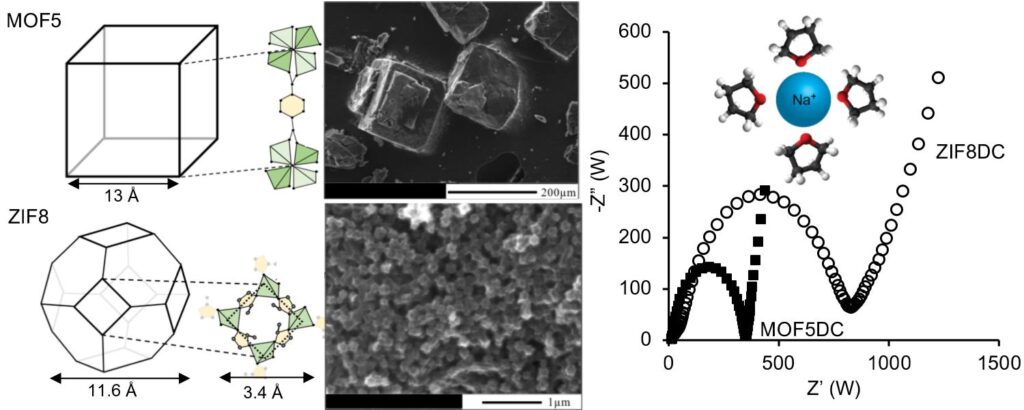Congrats to Nolan Ingersoll, Zahra Karimi, Dhruv Patel, and Robert Underwood for their recently published article in Electrochemica Acta!
Nolan Ingersoll, Zahra Karimi, Dhruv Patel, Robert Underwood, and Roseanne Warren, “Metal Organic Framework-Derived Carbon Structures for Sodium-Ion Battery Anodes,” Electrochimica Acta, Vol. 297, pp. 129-136, 2019
Abstract:
Metal organic framework-derived carbons (MOFDCs) have great potential as electrochemical energy storage materials due to their large surface areas and highly tunable pore structures. In this work, two MOFDCs are tested as sodium-ion battery anode materials and their charge storage mechanisms compared. MOF5 (Zn4O(1,4-benzodicarboxylate)3) and ZIF8 (Zn(2-methylimidazole)2) were used as sacrificial templates and pyrolyzed to yield highly porous, structurally-robust carbons with high surface areas (MOF5DC and ZIF8DC). Undoped ZIF8DC was tested for the first time as a sodium-ion battery anode to enable comparison of MOFDC charge storage mechanisms based solely on carbon structure. Half-cell discharge tests at C/2 attain capacity values of 227 and 107 mAh/g for MOF5DC and undoped ZIF8DC, respectively. Cycling stability testing confirms the structural robustness of the MOFDC materials, with the anodes retaining between 84-89% capacity over 66 cycles. Discharge profiles for both materials indicate that the primary storage mechanism of MOF5DC and ZIF8DC anodes is adsorption at defect sites. A comparison of half-cell discharge, cycling rate, and electrochemical impedance spectroscopy measurements suggests that MOF5DC also demonstrates some nanopore filling mechanisms. A comparison of Na+ion diffusion coefficients for MOF5DC and ZIF8DC indicates that an MOF structure with increased pore size may improve capacity and rate performance of MOFDCs as anode materials for sodium-ion battery cell applications.






